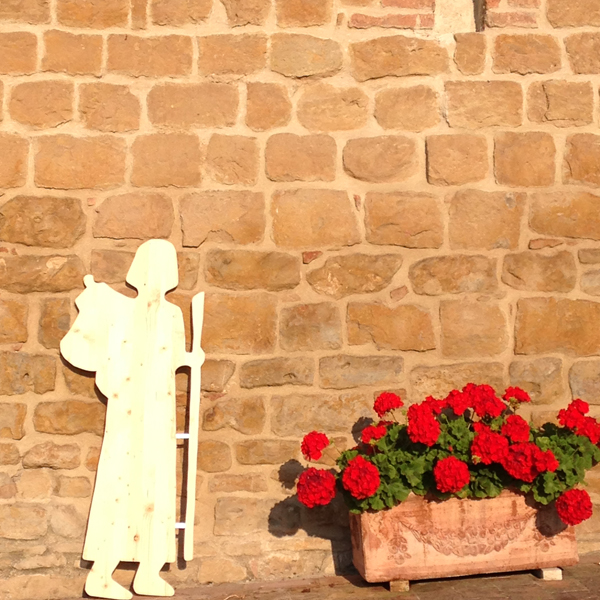It is hard to believe that more than a month has now passed since my mother and I walked from Lucca to Rome along the last 420km of the via Francigena. Known affectionately as Italy’s Camino, the via Francigena (“the road that comes from France” in Italian) is an ancient pilgrimage route that stretches from Canterbury in England to the Vatican in Rome passing through France and Switzerland. Considered the most important road of Medieval Europe, it was the route of Saxon Kings and archbishops who travelled from England to Rome.
The route of the via Francigena was first recorded in 990 by Sigeric, who was Archbishop of Canterbury at the time. He kept a diary of his return journey from Rome back to England. The rediscovery of Sigeric’s diary by Italian researchers in the 1980’s prompted renewed interest in the via Francigena and, although it is nowhere near as well known or as well travelled as the Way of St James pilgrimage route to Santiago de Compostela in Spain, it is becoming increasingly popular – with very good reason!
The section of the via Francigena we walked passes through what must be some of the most stunning scenery in Italy – meandering over rolling Tuscan hills, passing through medieval hilltop towns and descending into thickly wooded areas. Walking in Spring meant we were surrounded by a profusion of wildflowers; accompanied every morning by enthusiastic birdsong; and, from time to time, greeted by the almost overpowering sweet scent of Linden trees perfuming the air. The path also took us to some of Tuscany’s natural hot springs where we stopped to soak our weary bodies – just as the medieval pilgrims did!
We quickly settled into a routine of getting on the road very early each morning with the aim of arriving at our destination before the heat of the day and with plenty of time for a much needed siesta! Covering an average of around 20km each day, we made slow yet steady progress towards Rome, arriving on target three weeks after we started. While the walking wasn’t always easy – hilltop towns take some getting up to on foot, blisters can take their toll and the occasional thunderstorms seem to appear from nowhere! – the kilometres ticked over. It’s amazing what can happen when, step by step, you simply keep going.
It’s difficult to say exactly why the experience was so special, and what made it so different from anything I’d done before (if only I could write poetry!*). On reflection, I think, one of the most important things was what happened to my perception of time. In a way the camino seemed to give me the gift of time – time to step outside my normal life; time to slow down; time to just be; time to reflect; time with my mother; time to appreciate beauty; time in nature; time to breathe; time away from screens; time to talk; time to listen; time to laugh and time to cry. It was an experience I’ll never forget.
*‘Santiago’ by the poet David Whyte captures the essence of pilgrimage beautifully. It is the poem I wish I could have written!


